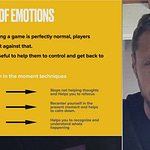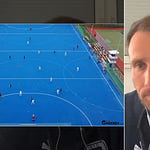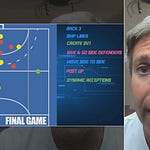This session provided a rare opportunity to dissect the core considerations influencing system selection, detailed explorations of contemporary tactical structures, and hands-on solutions for common challenges in building offensive coherence.
In a world where every top team is searching for a competitive edge, Tanuscio’s approach goes beyond copying elite teams, instead focusing on how to optimize offensive play in line with your squad’s unique characteristics. Below, we’ll dig deep into the masterclass: from philosophy and practical frameworks to player roles, tactical progressions and takeaways for your day to day coaching…
Choosing and Building an Offensive System: Beyond Copy-Paste
The foundation of Fede Tanuscio’s presentation is a clear warning: don’t fall into the trap of simply copying elite international systems. The “copy-paste” approach, popular among many coaches inspired by the world’s top teams, often fails due to mismatches in player skill sets, team philosophy, and club identity. Instead, Tanuscio advocates for an adaptive, player-centric process. He outlined several critical preconditions for system selection:
First, a coach must thoroughly evaluate the technical ability and skill profile of the team. If players aren’t technically equipped for certain patterns (as in the ability to flick the ball under pressure or execute quick-fire forehand passes), systems reliant on those actions will inevitably break down in real game scenarios. Coaches must also gauge the club or national team’s broader philosophy; some teams thrive on quick ball movement and collective structures, while others are built for risk management or slower, more defensive patterns.
A third pillar lies in balancing offensive ambition with defensive security, especially in transition phases. Building an effective attack is meaningless if it leaves the team exposed to counterattacks; thus, every offensive system should consider what happens immediately after possession is lost. Proper balance and clear roles for players—especially the contact players anchoring midfield—are essential.
Decision-making forms the fourth consideration. Even the most intricate patterns come to naught without empowering players to make sound choices based on evolving game situations. For Tanuscio, training is about equipping players with tools for better decision-making—not scripting every possible move.
System development, then, moves through progression: starting training without opposition to master movement and connections, then adding defenders to stress-test timing and decision-making, and finally replicating match-like conditions to cement learning.
Frameworks and Key Offensive Structures
1. The 4-3-3 Classic and Its Variations
Tanuscio anchored much of the tactical discussion around the 4-3-3 shape, breaking it down into several effective nuances.














